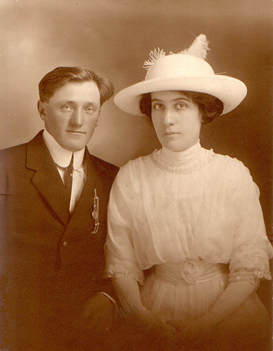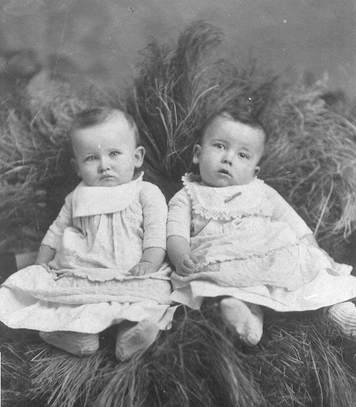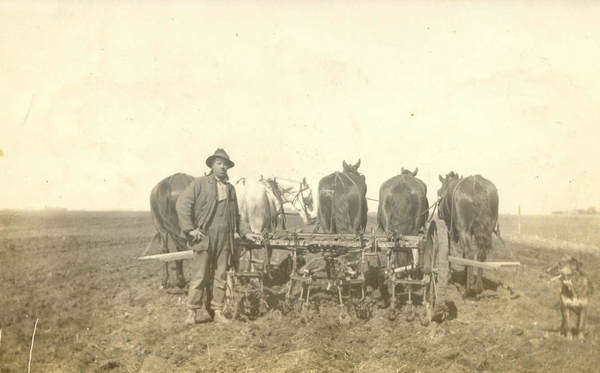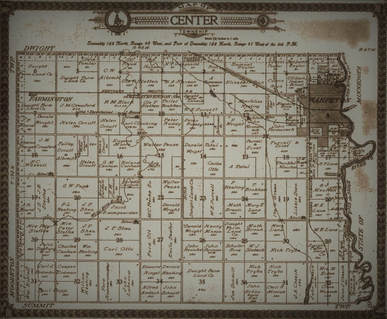|
Spring has finally arrived in my part of the world and we are giddy with temperatures approaching the 70s. Growing up in a farming community, spring brings with it renewed hope and a new planting season. And even if your ancestors were not farmers, they were likely tied to this cadence of the seasons. Shopkeepers, taverns, implement dealers and others relied on farmers to have a great crop so that they would purchase goods and services. So, what does any of this have to do with your ancestor’s story or genealogy? Well, like our ancestors, what we do for a living often impacts our family and culture.
Family, friends and neighbors are living treasures when we begin to write our family story. As you look for ways to add more interest, humanize your ancestors beyond the dates and places, look to these living treasures to help. You will not find someone who can share personal stories about your fourth-great grandfather, but there should be people with stories to share about your parents, grandparents and their siblings.
You’ve likely heard the adage to “measure twice, cut once” when doing carpentry. Genealogy benefits from find once, read twice (or even thrice). If you have been gathering your family information for a while, you may have several folders of census records, death, marriage and birth records connected to the various branches of your tree. A trick that I like to do periodically is to choose one ancestor and review their information. When we are in research mode, we tend to move into a “check box” mentality. ‘I’ve found great-grandpa’s death record and off we go to the next missing record on our list’. Often, we do a quick review of the document, add relevant dates to our family tree program and then file the document away. I find this to be especially true of you already have some knowledge about the ancestor. It’s a great idea to periodically pull those documents out for review. You may now have additional knowledge about your family that you didn’t have the first time you read the document. When you first acquired your great-grandfather’s obituary, perhaps you focused only on locations and dates. When you review the obituary again, you might see some additional clues such as where he lived or worked and the names of out of town relatives and their locations that you didn’t notice the first time. You may also find that comparing the information in the obituary to the death certificate and census records may generate more questions—especially if the data doesn’t quite match. When I’m not in research mode, the benefit of rereading and reviewing data allows me to really think about the information. I start thinking about what it was like in 1870 Wisconsin, eking out a living on a homestead, trying to raise six children with no electricity or modern conveniences. Or when a relative went off to the civil war, how did his wife cope…keeping the farm going with five children under ten and one on the way? How difficult this must have been! Did neighbors help? Were there any relatives to pitch in? Perhaps you’ve looked at a 1930s census many times but never really looked at where your ancestor was employed. Could you find more information about that company or find out what businesses were around in 1930s? These things help you to better understand your family story, providing color and context around major life events. Your Challenge:
“Keep reading. It's one of the most marvelous adventures anyone can have.” Lloyd Alexander  Many of us have immigrant ancestors who were farmers. With the homestead act of 1862, more opportunities became available to settle in the Midwest and beyond. Some were second-generation Americans left the Ohio, Indiana, Wisconsin areas where their parents had homesteaded to travel further west to Minnesota and the Dakotas. Like many of us today, they moved to improve the life of their family and for new opportunities. If you do have farming ancestors, there is great value in the information and documents tied to land records. County Courthouses are repositories for historical and current information on the ownership of land. For the purposes of telling our family story, I’d like to focus on two record sources that I’ve found useful when telling my family story: Agricultural Census Records and Homestead Records. Many online genealogy sites have census records for the states as well as federal records. An overlooked part of the census is the agricultural census. On these records, you can find everything from how many mules they owned to number of bushels of potatoes raised to the value of the farm and machinery. You can view an example of a blank 1885 agricultural census to see what information is available. The quality of the completed form was dependent on the enumerator and how willing/thorough your ancestor was in answering the questions. When you look at your relatives’ information be sure to compare with their neighbors’ information. It will give you a sense of how they were doing. If you have a relative who you think homesteaded a piece of land you may be in luck. The US National Archives & Records Administration (NARA) has the homestead records called Land Entry Records. These packets include a gold mine of information—especially if your ancestor proved up and met the requirements of the homestead. Here are just a few of the interesting things I found in one of my ancestor’s packet: Homestead application
|
AuthorWith a lifelong passion for genealogy and history, the author enjoys the opportunity to share genealogy tidbits, inspiring others to research and write their family story. Archives
July 2024
Categories |







 RSS Feed
RSS Feed